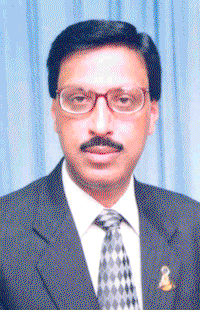Letter from the Editor-In-Chief
Letter from the Editor-In-Chief
JULY 2010
 As is often the case during this time of the year, the news is flooded by reports of natural disasters as the monsoons unleash their fury on a hapless North East. Going through the pages of this July 2010 issue of Eastern Panorama, one will find several references to these monsoons in quite a number of our articles.
As is often the case during this time of the year, the news is flooded by reports of natural disasters as the monsoons unleash their fury on a hapless North East. Going through the pages of this July 2010 issue of Eastern Panorama, one will find several references to these monsoons in quite a number of our articles.
I will not be surprised when more than a few readers, upon going through our cover story this month entitled ‘Highway from Hell’, reads on in sheer disbelief of the complacency and nonchalance displayed by the PWD officials of Assam’s North Cachar Hills district and all others involved in higher authority whose jobs are to ensure the quality roads which are vital for the development of the region. As has been stated time and again, the North East has a reputation of lagging far behind the rest of the country when it comes to connectivity be it through air, land or waterways. Isn’t this reason enough for us to maintain those roads which are already in existence? It is definitely a tough job to maintain these roads in areas which are highly prone to the ravages of nature such as landslides and floods and the North East region is definitely no stranger to these natural calamities. But, is that any reason for us to totally give up on them? This definitely seems to be the case in the North Cachar Hills district where some stretches of the roads have not seen any form of repair or maintenance for a long, long time – a clear case of abandonment. Also, the alignment of the roads in certain stretches such as in the Sonapur areas is ill conceived and there is a need for immediate reconsideration for alterenate routes. The continuous loss of lives and impedement that has been going on for so many years can not be allowed to go on.
And then there is the problem of flooding and yet again, Assam is the scene of the devastation as the Barak River, as it has done time and again, inundates large portions of the Barak Valley thereby affecting over 3.5 lakh people. Once again, complacency rears its ugly head as various schemes which were recommended by a specially constituted task force to counter this problem were not implemented.
Added to the direct destruction caused by the monsoons is the fact that many people take advantage of the cover provided by the incessant rains to carry out nefarious activities as has been found in the Dibru – Saikhowa National Park where poachers, aided by the downpour, take advantage of the situation and smuggle out rare and endangered species of orchids from the park, completely unmindful of the destruction they are causing to the ecology.
In spite of all the destruction caused by these dreaded monsoons, there is a primeval power and beauty to them and one has to be in certain parts of the North East to fully understand this paradox. Cherrapunjee is one such place where the monsoons greatly buffer the beauty of the age old waterfalls while at the same time play hell on the landscape through surface erosion. The fog covered cliffs overlooking waterfalls swathed in mist are sights that can only be marveled at. Yet, once again, this beauty is threatened by the works of man as rampant felling of trees and mining operations threaten to change the climatic conditions of not only Cherrapunjee and its surrounding areas but neighbouring countries such as Bangladesh as well. This issue is addressed in the article entitled ‘Conserving the Sohra Paradox’ which is just another testimony of that fact that there is no end to nature’s beauty, nor the destructive nature of man.
Dr. K. K. Jhunjhunwala
